Concave, convex, or flat – each mirror type has its own utilities.
But only one type is widely used as rearview mirrors. And no. It’s not the flat mirror.
So, are motorcycle mirrors convex? Motorcycles and all automobiles use convex mirrors as rear-view mirrors. Convex mirrors provide a wide-angle view of vehicles and other objects behind the motorcycle – thus reducing blind spots.
Let’s deep dive into why convex rear view mirrors are so popular and why not flat or concave.
How motorcycle mirrors work
Motorcycle rear-view mirrors help the rider to see what’s going on behind the vehicle.
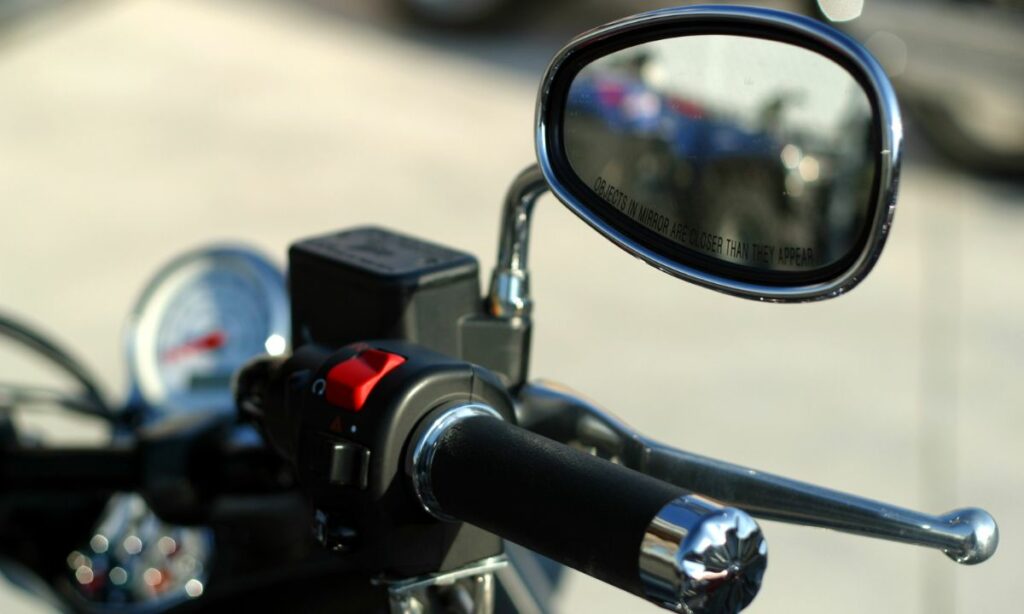
The rider will be aware of any vehicle switching lanes, trying to overtake, or simply what’s happening on the road behind.
It’s crucial for the rider to be aware of such things for safety purposes.
Now, let’s talk about these mirrors.
The rearview mirrors installed on the vehicle should have these characteristics:
- cover a wide angle of the road
- show the rider clearly what’s there on the road behind

So which type of mirrors do you think fit the bill? What mirror type does a motorcycle have?
Motorcycles and all vehicles use convex mirrors as rear-view mirrors.
Not only do convex mirrors show what’s happening behind the vehicle clearly, they also provide a wide angle of the road.
Increased view range helps the rider to be more aware of things going on. As a result, improves the overall rider safety.
Advantages of convex mirrors
Here are the main advantages of using convex mirrors as rear-view mirrors:
- Wide-angle view of the road behind
- Fewer blindspots
- Increases awareness
- Improved safety

The first two points are straightforward. The convex mirrors cover a wide range view so that the bike rider can see a lot of things happening behind.
As a result, the rider has fewer blind spots. With the increased view, the rider can see most of the things happening on the road behind.
Of course, it’s not foolproof. There still will be blind spots that the rider will be unable to see.
But with a convex rear view mirror the blind spots are far lower as compared to a flat mirror. (Concave mirrors are abysmal and have a short view angle).
With a better view, the rider is now far more aware of the happenings on the road behind.
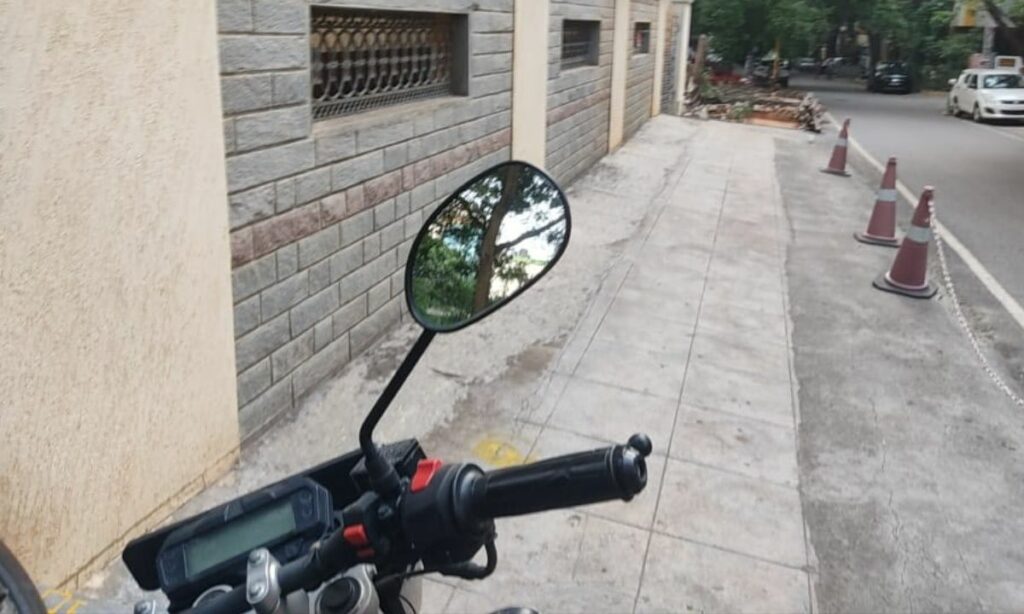
Vehicles switching lanes, vehicles overtaking, vehicles speeding, or worse some crashes – are all visible better with convex rear view mirrors. The rider has more awareness of these things.
And as a result, the rider will be far safer. With more awareness, rider safety increases.
Disadvantages
Convex mirrors ain’t perfect little creatures though.
They have their cons too.

First and foremost, the convex mirror images are not of accurate size and usually appear smaller than they actually are.
The image you see on your bike’s convex rear-view mirror is a distorted one.
I would argue this is a feature. Not a bug.
The distorted image with a smaller appearance is what helps the convex mirror to cover a wide range reflections.
Else it would have been a flat mirror with no distortion but actual size image reflection.
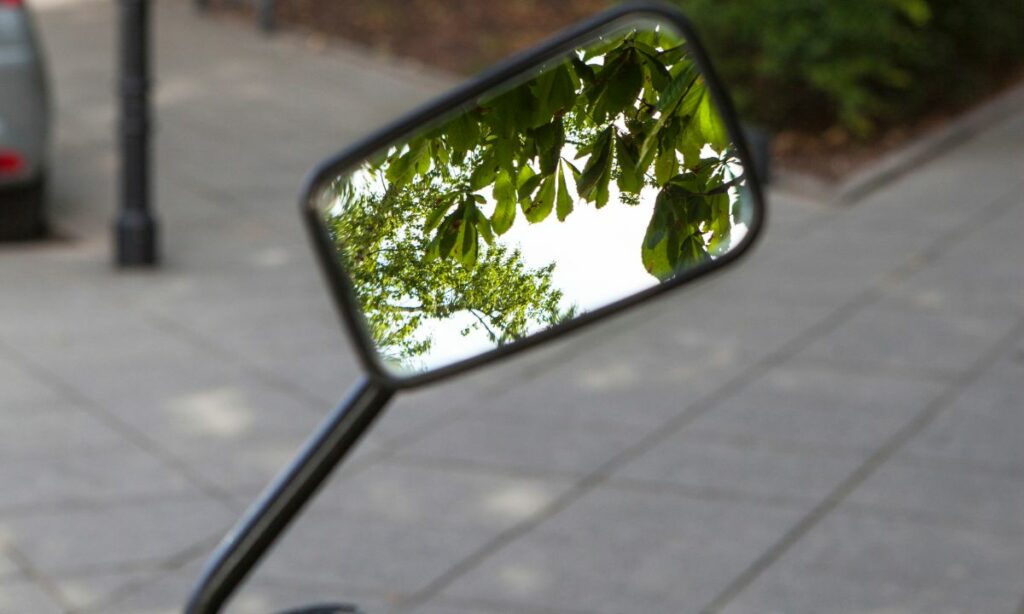
Second, convex mirrors distort the distance away as well.
The vehicles behind you might actually be far nearer to you than what the convex rear-view mirrors show.
The vehicles and other objects seen in a convex mirror will look smaller and farther away.
The view in the mirror might appear farther away. When in reality they are nearer.
This is a concern.
To address this, the convexity is maintained at optimum levels on rear-view mirrors so as to not distort the image too much.
Flat vs convex – which mirror is better
Flat mirrors are the second best choice as rear-view mirrors.
But unlike convex mirrors, flat mirrors do not distort the image. The reflection what you see on a flat mirror is the actual representation of things it is reflecting.

The downside of a flat mirror though is its limited view range.
As a result, the number of blind spots will be far higher in flat mirrors when compared to convex mirrors.
A convex mirror gives a much wider view of the rear than a normal flat mirror.
But, vehicles and other objects seen in a convex mirror will look smaller and farther away than when seen in a flat mirror.
In short. Convex mirrors distort images but have a wide view range. Flat mirrors do not distort images but have a limited view range.
Depending on the application, each mirror type is suitable.
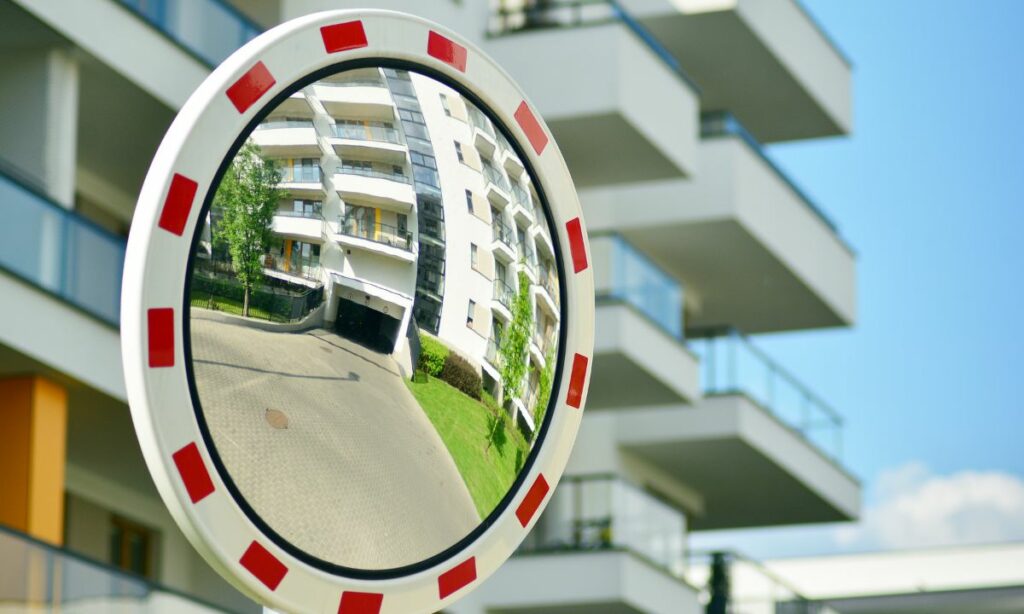
For regular household applications and certain scientific and research applications – flat mirrors are the preferred type.
For rear-view mirrors on automobiles – convex mirrors are the go-to mirror type.
Concave mirrors are a big NO
Concave mirrors are not used and should not be used as rear-view mirrors.
The primary reason being – concave mirrors show magnified images and as a result, have lots of blind spots.
Concave mirrors are curved inward. As a rear view mirror, they show magnified images of the vehicles behind.
As a rider, you would see a magnified vehicle or two – but not be aware of other things on the road behind you.
In short, the concave mirror creates too many blind spots.
The rider will not have a clear view of what’s there on the road behind him.
How to adjust the mirror
The thumb rule to adjust the rear-view mirror is to – be able to see a small portion of your shoulder. Just a touch.
The remaining and the larger portion of the mirror should of course cover the road behind the motorcycle.
This adjustment gives a better understanding to the rider of the relative distance between them and the other vehicles behind their motorcycle.
So, make sure your shoulder ends are visible in the rear-view mirror.
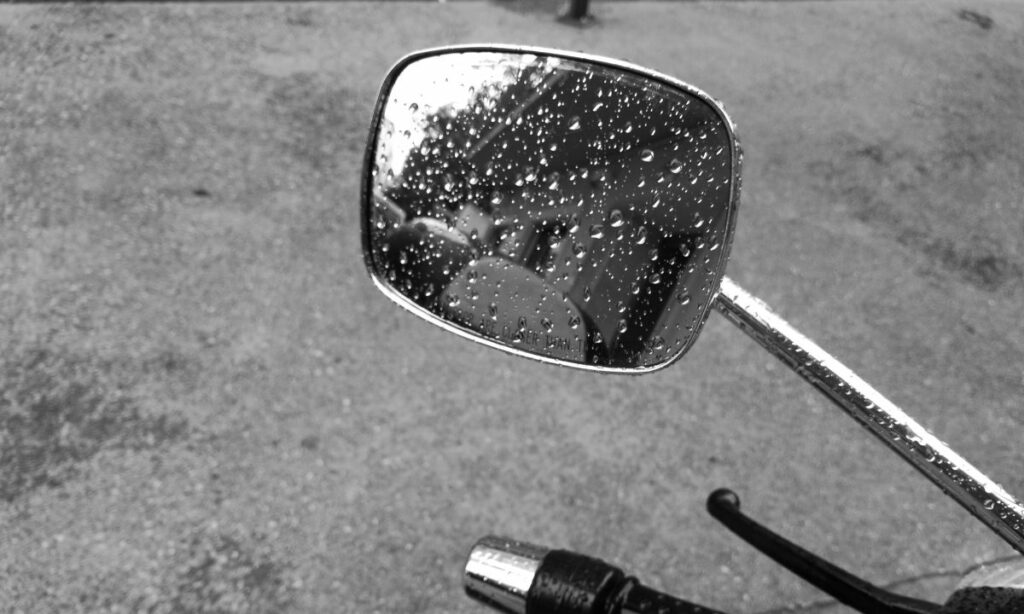
Bottomline.
How to adjust the rear-view mirror?
Adjust in such a way that a small portion of your shoulder is visible.
And a large portion behind your motorcycle is seen clearly with reference to your riding posture.
That’s it.
FAQs
Yes. Car rear-view mirrors are convex as well. In fact, all automobile rear-view mirrors are convex type due to their wide range view.
Most motorcycle headlights are convex lenses. But there are concave lenses as headlights as well. Note that these are lenses and not mirrors. The reflector of a motorcycle headlight though is a concave mirror.
While technically one can, it is NOT advised to ride a motorcycle without rear-view mirrors. In some regions, motorcycles with no mirrors are illegal or can be subjected to hefty fines.
